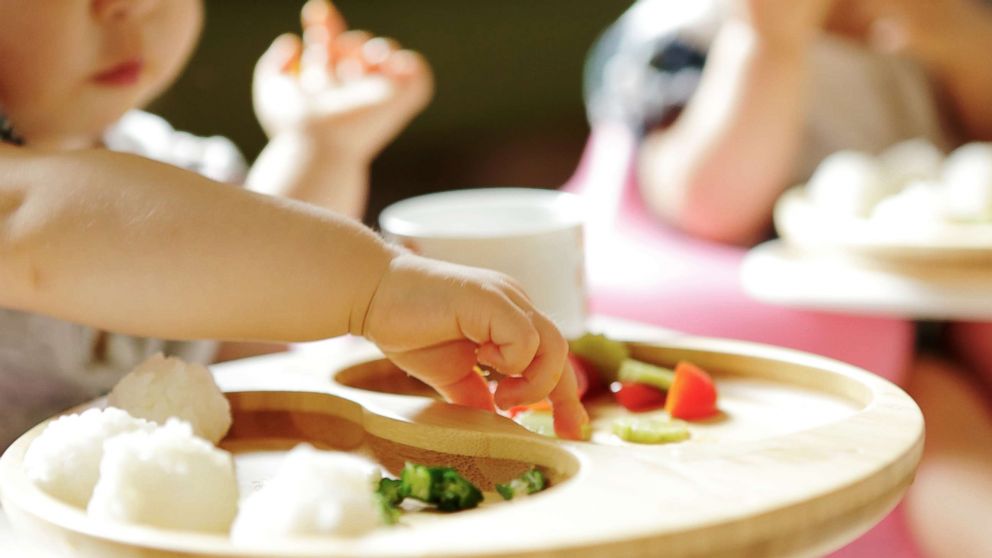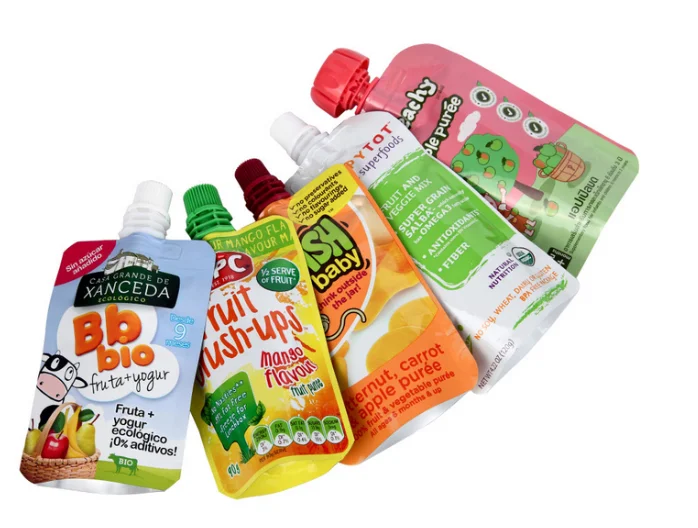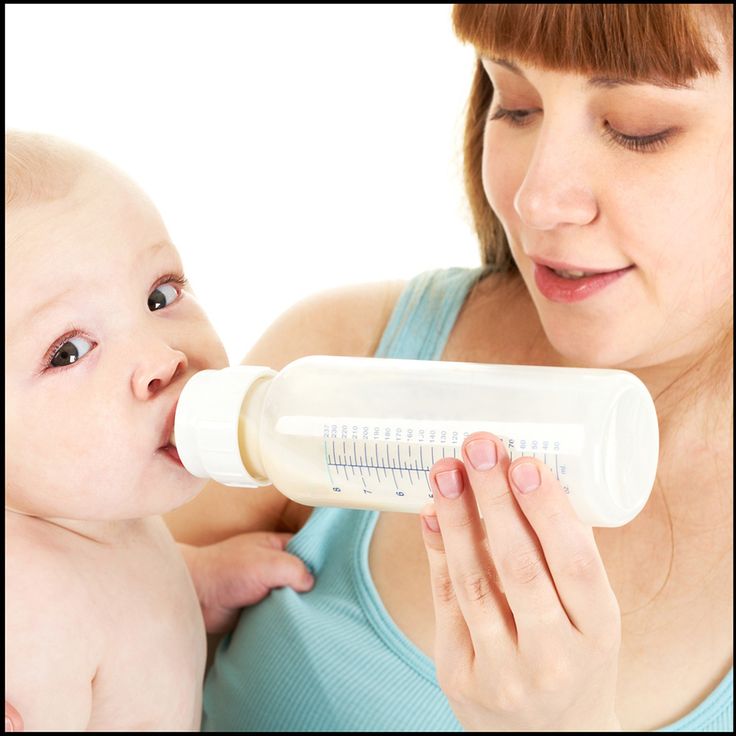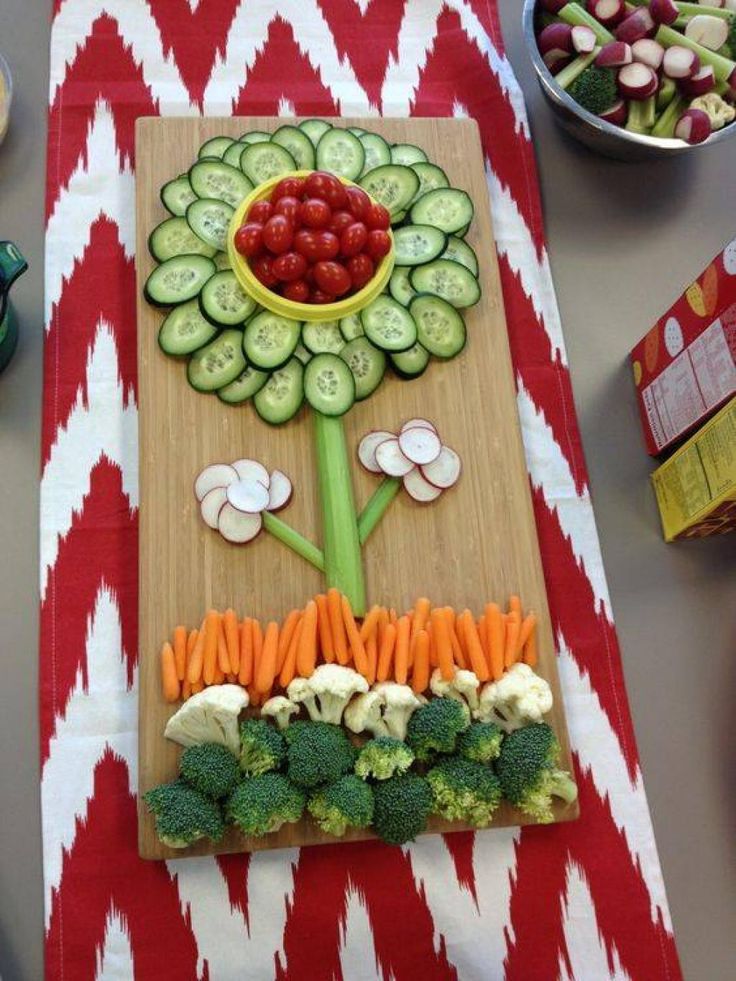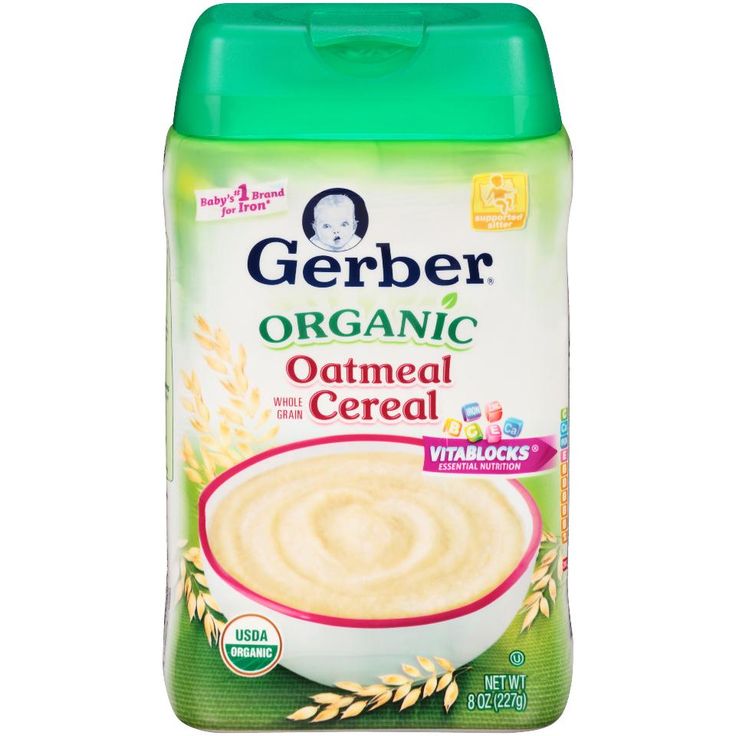Sign baby ready for solid food
Introducing solids: why, when, what & how
Solid foods: why babies need them
As babies get older, they need solid food to get enough nutrients for growth and development. These essential nutrients include iron, zinc and others.
For the first 6 months of life, babies use iron stored in their bodies from when they were in the womb. They also get some iron from breastmilk and/or infant formula. But babies’ iron stores go down as they grow. By around 6 months, babies need to start having solid food.
Introducing solids is also important for helping babies learn to eat, giving them experience of new tastes and textures from a range of foods. It develops their teeth and jaws, and it builds other skills that they’ll need later for language development.
Signs that it’s time to introduce solids
Signs your baby is ready for solids include when your baby:
- has good head and neck control and can sit upright when supported
- shows an interest in food – for example, they look at what’s on your plate
- reaches out for your food
- opens their mouth when you offer them food on a spoon.
Most babies start to show these signs by around 6 months, although this can vary.
It’s recommended not to introduce solids before 4 months.
If your baby is nearing 7 months of age and hasn’t started solids, you might like to get some advice from your child and family health nurse or GP.
The best times of day to introduce solids
When you’re first introducing solids, it’s good to offer solids when you and your baby are both happy and relaxed.
This is often after a feed of breastmilk or formula. Babies will still have room in their tummies for a taste of new foods after a feed of breastmilk or formula. But if they’re really hungry before a feed, they just want the breastmilk or formula that they know satisfies their hunger.
As time passes, you’ll learn when your baby is hungry or full, not interested or tired.
Signs of hunger include your baby:
- getting excited when they see you getting their food ready
- leaning towards you while they’re sitting in the highchair
- opening their mouth as you’re about to feed them.

Signs your baby is no longer interested include:
- turning their head away
- losing interest or getting distracted
- pushing the spoon away
- clamping their mouth shut.
Your baby’s appetite can vary from day to day.
How much food to offer when introducing solids
When you’re first introducing solids, try offering 1-2 teaspoons of food once a day. At first, your baby might have only a small taste and probably won’t swallow much.
As your baby grows, you can increase the amount according to your baby’s appetite and signs.
By 12 months, your baby should be eating around 3 small meals a day, plus breastmilk or infant formula.
The right textures for first foods
When your baby is ready for solids, first foods might be smooth or finely mashed, depending on what baby likes. Over the next weeks and months, your baby can move on to roughly mashed or minced foods and then chopped foods.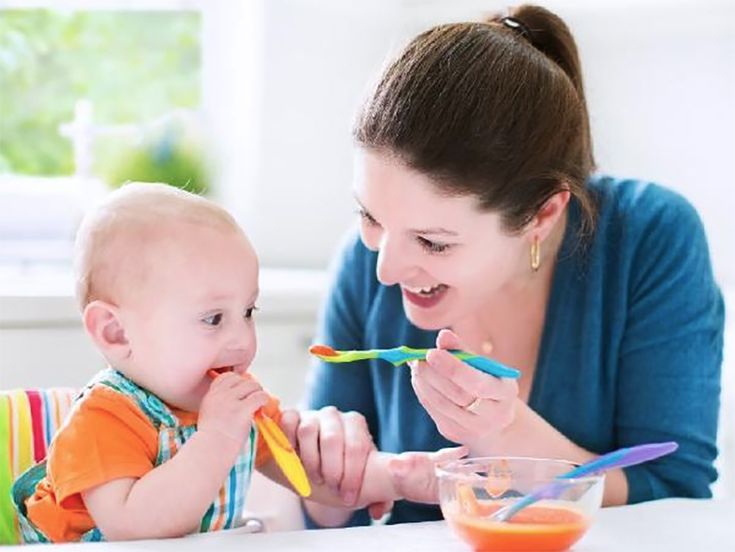 All foods should be very soft.
All foods should be very soft.
Your baby needs a variety of food textures. This helps your baby learn how to chew, and chewing helps with speech development and self-feeding. It also helps to prevent feeding difficulties as your baby develops. Babies can chew even before they get their first teeth.
By the time your baby is 12 months old, they should be eating the same foods that the rest of the family is eating. But you might still need to chop some foods into smaller pieces and cook vegetables until they’re soft.
To prevent choking, always supervise babies and young children while they’re eating solid food. Avoid nuts, take special care with pieces of meat and check fish for small bones, because these are choking hazards. And if your baby can move around, make sure baby is sitting down while they’re eating. If you sit with your baby while they’re eating, baby is less likely to move around.
Types of food to offer when introducing solids
All new foods are exciting for your baby.
The key is to include iron-rich foods of the right texture in your baby’s first foods. Iron-rich foods include:
- iron-fortified infant cereal
- minced meat, poultry and fish
- cooked tofu and legumes
- mashed, cooked egg (avoid raw or runny egg).
To these iron-rich foods, you can add other healthy foods of the right texture like:
- vegetables – for example, cooked potato, pumpkin, sweet potato, carrot, broccoli or spinach
- fruit – for example, banana, apple, pear, melon or avocado
- grains – for example, oats, bread, rice and pasta
- dairy foods – for example, yoghurt and full-fat cheese.
You can introduce any number of new foods at a time and in any order. When you offer your baby a variety of foods, they can try plenty of new tastes and get a range of nutrients.
Read our tips for introducing solid foods to learn how to get your baby interested in new foods and manage mealtime mess and play.
Breastmilk and infant formula while introducing solids
You should keep breastfeeding or using infant formula until at least 12 months.
When you start introducing solids, breastmilk or infant formula should still be the main source of your baby’s nutrition. Over the next few months, your baby will start having more solids and less milk or formula. The rate that this happens will vary.
By around 9 months, babies have generally developed enough chewing and swallowing skills to move from having milk before solids to having milk after solids.
Here are some signs that your baby is getting enough nutrition from both solids and breastmilk or formula during this time. Your baby:
- has plenty of wet nappies – at least 6-8 wet cloth nappies or 5 very wet disposables in 24 hours
- is alert and mostly happy after and between feeds
- is gaining weight at about the right rate – your child and family health nurse will weigh your baby at your regular check-ups.
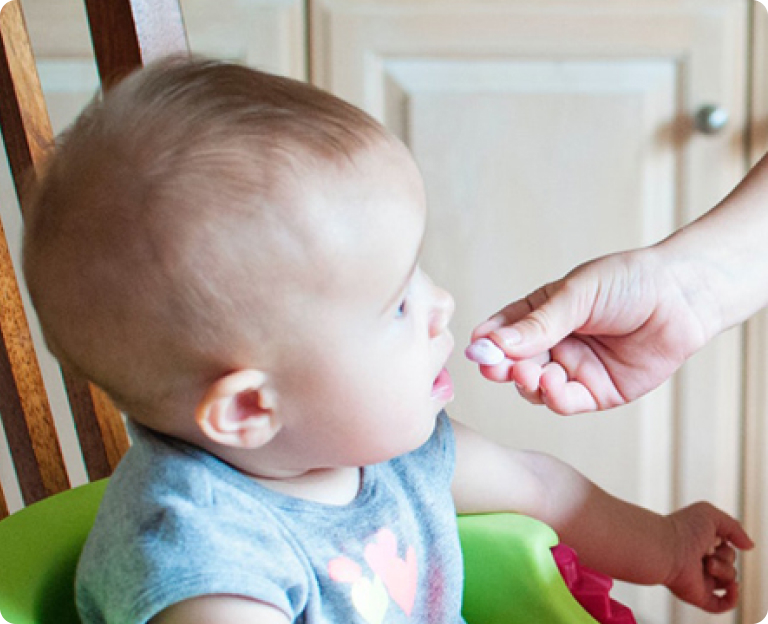
From 12 months onwards, solids should be the main source of your baby’s nutrition. Your baby doesn’t need infant formula after 12 months, but you can keep breastfeeding for as long as you and your baby like.
If solid food replaces breastmilk and/or infant formula too quickly, babies can miss out on important nutrition. If you have any concerns about your baby’s feeds or weight, talk to your midwife, child and family health nurse, lactation consultant or GP.
Introducing water
Once your baby has reached 6 months, you can start to offer baby cooled, boiled water in a cup at mealtimes and at other times during the day. This is so your baby can practise drinking from a cup, but baby still doesn’t really need fluids other than breastmilk or formula at this age.
Once your baby has reached 12 months, you can offer fresh tap water without boiling it.
Foods and drinks to avoid while introducing solids
There are some foods to avoid until your baby is a certain age:
- Honey until 12 months – this is to avoid the risk of infant botulism.

- Raw or runny eggs and foods containing raw eggs like home-made mayonnaise until 12 months – bacteria in raw eggs can be harmful to babies.
- Reduced-fat dairy until 2 years – babies need full-fat dairy for growth.
- Whole nuts and similar hard foods until 3 years – these are choking hazards.
There are some drinks to avoid until your baby is a certain age:
- pasteurised full-fat cow’s milk as a main drink until 12 months
- dairy alternatives like soy, goat’s, sheep’s, rice, oat, almond and coconut milk until 2 years, unless your GP or child and family health nurse has recommended these for a particular reason
- unpasteurised milks at all ages
- tea, coffee or sugar-sweetened drinks at all ages
- fruit juice – this should be limited at all ages (whole fruits are better because they have fibre and help babies develop chewing and feeding skills).
Your baby doesn’t need added salt or sugar.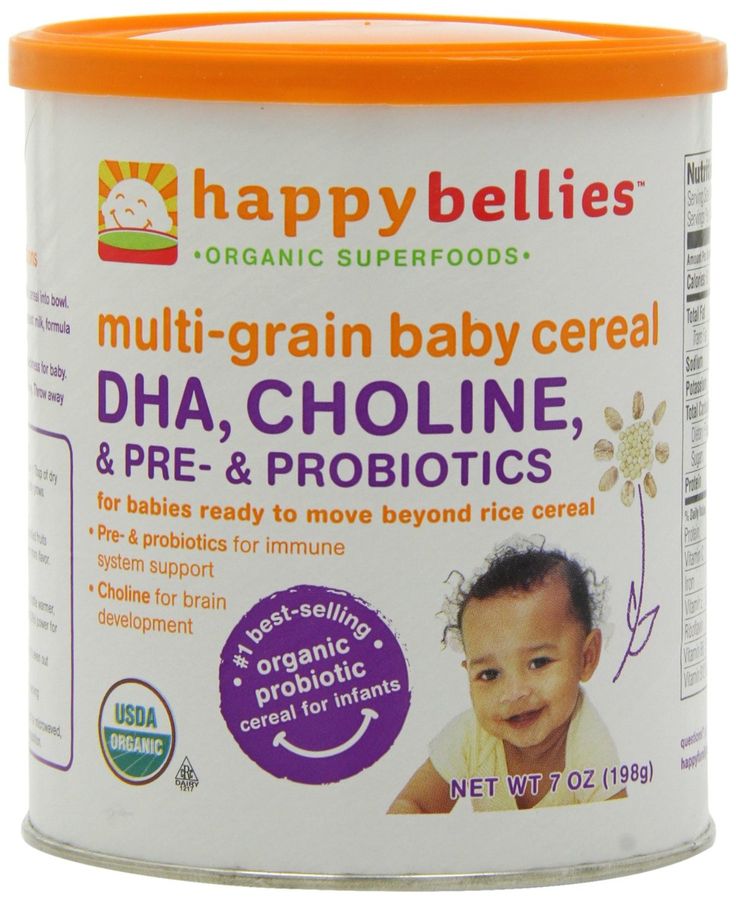 Processed or packaged foods with high levels of fat, sugar and/or salt aren’t good for babies and children. These foods include cakes, biscuits, chips and fried foods.
Processed or packaged foods with high levels of fat, sugar and/or salt aren’t good for babies and children. These foods include cakes, biscuits, chips and fried foods.
Food allergy and introducing solids
Introducing allergenic foods early can reduce the risk of your child developing food allergy. Allergenic foods are foods that might cause allergies.
All babies, including babies with a high allergy risk, should try solid foods that might cause allergies from around 6 months of age. These foods include well-cooked egg, peanut butter and other nut butters, wheat (from wheat-based breads, cereals and pasta) and cow’s milk (but not as a main drink).
Once you’ve introduced an allergenic food, it’s a good idea to regularly include it in your baby’s diet.
It’s a good idea to get advice from your GP, child and family health nurse, dietitian, paediatrician or allergy and immunology specialist for the following reasons:
- Your baby already has a food allergy.

- Your baby has severe eczema.
- Your family has a history of food allergy and you’re concerned about starting solids.
- You’re worried about reactions to foods.
Is baby ready for solid foods? (Developmental signs of readiness) • KellyMom.com
What do the experts say?
Health experts and breastfeeding experts agree that it’s best to wait until your baby is around six months old before offering solid foods. The American Academy of Pediatrics, the World Health Organization, and many other health organizations recommend that babies be exclusively breastfed (no cereal, juice or other foods) for the first 6 months of life. I’m not going into the many health benefits of delaying solids here; see When Should Baby Start Solids? for more information.
Developmental signs that baby is ready for solids
Solids readiness depends on both the maturity of baby’s digestive tract and baby’s developmental readiness for solids. Although the maturity of baby’s digestive system is not something that we can readily observe, research indicates that 6 months appears to be ideal for avoiding increased illness and other health risks of too-early solids.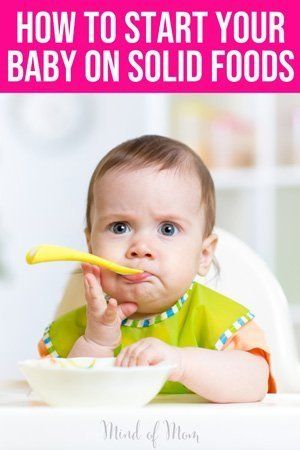 After this point, different babies are ready for solids at different times — developmental readiness for solids cannot be determined using a calendar. Most babies are developmentally ready for solids somewhere between 6 and 8 months.
After this point, different babies are ready for solids at different times — developmental readiness for solids cannot be determined using a calendar. Most babies are developmentally ready for solids somewhere between 6 and 8 months.
Now infants can get
all their vitamin D
from their mothers’ milk;
no drops needed with
our sponsor's
TheraNatal Lactation Complete
by THERALOGIX. Use PRC code “KELLY” for a special discount!
Signs that indicate baby is developmentally ready for solids include:
- Baby can sit up well without support.
- Baby has lost the tongue-thrust reflex and does not automatically push solids out of his mouth with his tongue.
- Baby is ready and willing to chew.
- Baby is developing a “pincer” grasp, where he picks up food or other objects between thumb and forefinger. Using the fingers and scraping the food into the palm of the hand (palmar grasp) does not substitute for pincer grasp development.

- Baby is eager to participate in mealtime and may try to grab food and put it in his mouth.
We often state that a sign of solids readiness is when baby exhibits a long-term increased demand to breastfeed (sometime around 6 months or later) that is unrelated to illness, teething pain, a change in routine or a growth spurt. However, it can be hard to judge whether baby’s increased breastfeeding is related to readiness for solids. Many 6-month-old babies are teething, growth spurting, beginning to experience separation anxiety, and experiencing many other developmental changes that can lead to increased breastfeeding – sometimes all at once! Make sure you look at all the signs of solids readiness as a whole, because increased breastfeeding alone is not likely to be an accurate guide to baby’s readiness.
More on developmental readiness…
In April 2001, a literature review “of the developmental readiness of normal full term infants to progress from exclusive breastfeeding to the introduction of complementary foods” was jointly published by Wellstart International and the LINKAGES Project.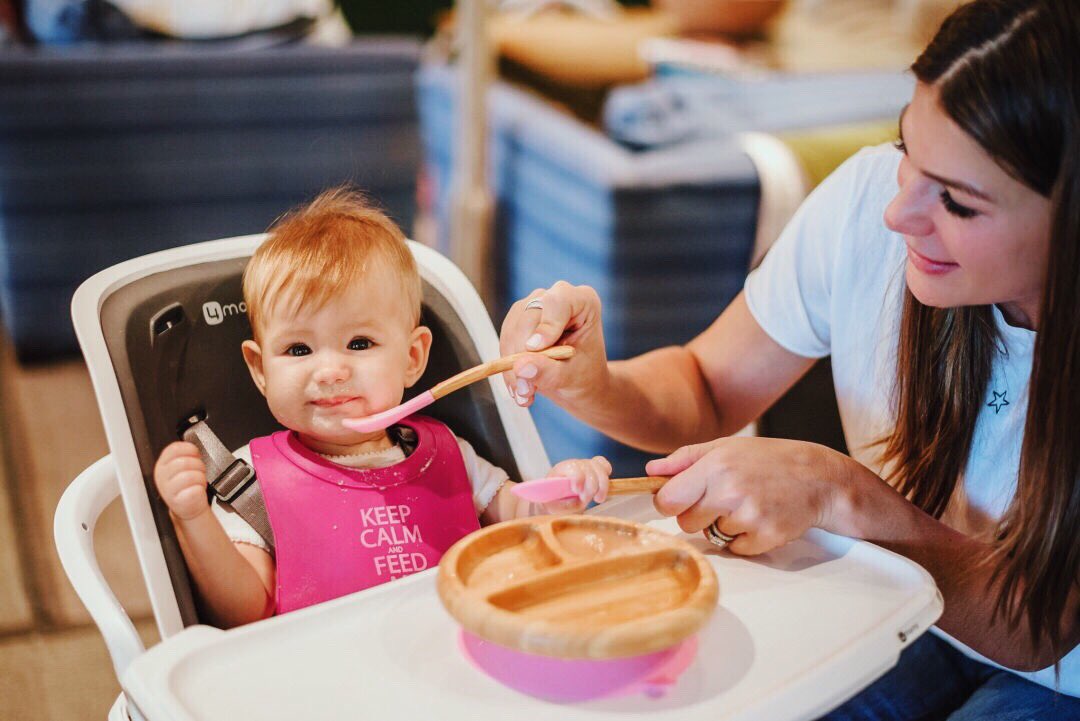 Per the authors, “The review does not focus on health outcomes associated with discontinuing exclusive breastfeeding at a particular age but rather on the biologic/developmental readiness for this complex experience. Four processes or functions were selected for inclusion: gastrointestinal, immunologic, oral motor and the maternal reproductive processes that relate to the continuation of lactation and the provision of breastmilk.”
Per the authors, “The review does not focus on health outcomes associated with discontinuing exclusive breastfeeding at a particular age but rather on the biologic/developmental readiness for this complex experience. Four processes or functions were selected for inclusion: gastrointestinal, immunologic, oral motor and the maternal reproductive processes that relate to the continuation of lactation and the provision of breastmilk.”
Following are some of the conclusions of this review:
- “Thus, exclusive breastfeeding to about six months allows the infant to have greater immunologic protection and limit the exposure to pathogens at a vulnerable age. This in turn permits the energy and nutrients that might otherwise be diverted to provide for immunologic responses to be available and utilized for other growth and developmental processes.”
- “These clinical reports indicate that the majority of normal full term infants are not developmentally ready for the transition from suckling to sucking or for managing semi-solids and solid foods in addition to liquids until between 6 and 8 months of age.
 ”
” - “Using this available information on the development of oral motor function, maternal reproductive physiology and development of the infant’s immunologic and gastrointestinal function, the expert review team concluded that the probable age of readiness for most full term infants to discontinue exclusive breastfeeding and begin complementary foods appears to be near six months or perhaps a little beyond. The also felt that there is probable convergence of such readiness across the several relevant processes.”
- “The consensus opinion of the expert review group was that given the available information and the lack of evidence of significant harm to either normal mothers or normal infants, there is no reason to conclude that exclusive breastfeeding should not continue to six months.”
What about starting solids AFTER 6 months? At what point does baby need nutrition from solids that cannot be provided by breastmilk alone?
Medical research tells us that exclusive breastfeeding allows babies to thrive for the first 6 months. In the words of the World Health Organization,
In the words of the World Health Organization,
“Breastfeeding is an unequalled way of providing ideal food for the healthy growth and development of infants… A recent review of evidence has shown that, on a population basis, exclusive breastfeeding for 6 months is the optimal way of feeding infants.”
But what if baby is not very interested in solids at six months? Babies who are not yet interested in solid foods can and do thrive on breastmilk alone until 9-12 months or later. You might hear people say, “Food before one is just for fun,” but perhaps this should be changed to “Food before one is mainly for fun.” As long as your baby is continuing to grow and develop as he should, your milk is meeting his needs well. Sometime after six months, however, babies will gradually begin to need more iron and zinc than that provided by breastmilk alone – at that point, additional nutrients can be obtained from small amounts of solids.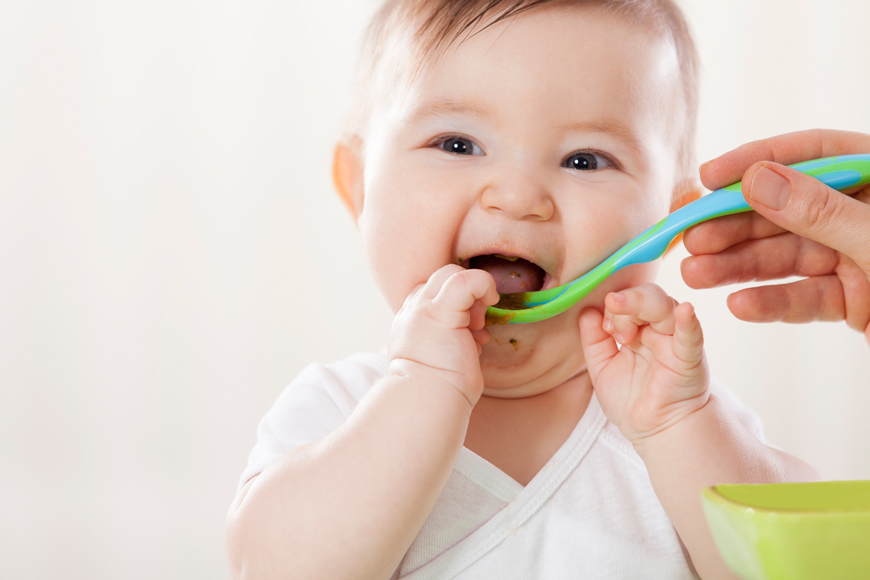 If your baby chooses to continue exclusive breastfeeding, simply keep an eye on growth and iron status, continue to watch your baby for signs that he is ready for solids, and offer appropriate solids for him to try – baby can decide whether or not to eat them. No matter when baby begins solid foods, breastmilk should make up the majority of baby’s nutrition through the end of the first year.
If your baby chooses to continue exclusive breastfeeding, simply keep an eye on growth and iron status, continue to watch your baby for signs that he is ready for solids, and offer appropriate solids for him to try – baby can decide whether or not to eat them. No matter when baby begins solid foods, breastmilk should make up the majority of baby’s nutrition through the end of the first year.
What if my 4-5 month old seems developmentally ready for solids?
Four- to five-month-old babies are sometimes very eager to participate at mealtime, but it doesn’t necessarily mean that they are ready to eat solids – more often it’s just the normal developmental urge to do what everyone else is doing. Research studies tell us that there are many health advantages to delaying solids for about 6 months for all babies, not just the babies who are not yet interested in mealtime.
There are a number of things you can do to let baby participate in mealtimes without starting solids:
- Let baby sit with the family at mealtime – in a lap, booster seat or high chair.

- Give baby a cup of water or expressed milk. Your baby can entertain himself at mealtime while learning to use a cup. 1-3 ounces of water in the cup should be plenty (often for the entire day). Many moms choose to use only water or a small amount of breastmilk to avoid wasting the “liquid gold” while baby learns to use the cup.
- Offer baby sips of water from your cup or straw. Even if baby hasn’t figured out how to use a straw yet, you can put your straw in water, block the top end of the straw with your finger to trap a little water in the straw, then let baby drink the water from the lower end of the straw (unblock the top end once it’s in baby’s mouth).
- Offer baby spoons, cups, bowls and other baby-safe eating utensils to play with during mealtime.
- Give baby an ice cube (if it’s a baby-safe size & shape) or ice chips to play with.
- Offer baby a momsicle (popsicle made from breastmilk) or slushy frozen breastmilk to eat with a spoon.
Myths about solids readiness
There are many myths and outdated information regarding how to tell if baby is ready for solids.
MYTH: Baby’s weight has reached a “magic” numberJust because your baby achieves “x” number of pounds, or has doubled birth weight, (or however much your baby weighs) does not mean that she is automatically ready for solids – particularly if she is under 6 months. The American Academy of Pediatrics/World Health Organization recommendations for starting solids at 6 months or later has no exceptions for babies who weigh more. The research that I’ve seen on the health benefits of starting solids at 6 months and later holds for all babies, no matter what their weight. It’s the maturity of the digestive tract and baby’s developmental readiness that makes the difference, not baby’s weight. |
It’s rather interesting to note that moms are told to start solids for both big and small babies. It’s not even uncommon to hear opposite arguments for both sides from the same person!
MYTH: “Your baby is big so you need to start solids. ” ” Moms might be told to start solids for differing reasons when they have a large baby. Some are told that since baby is big, they won’t be able to produce enough milk to satisfy baby. This is quite untrue – almost all mothers have the ability to produce enough milk to exclusively breastfeed twins and even triplets. If you allow your baby to nurse on cue, your body will make enough milk for your baby. In addition, research tells us that exclusively breastfed babies do not increase the amount of milk they drink after the first 4 weeks or so – after the first month, milk intake stays constant (except for temporary appetite spurts) until sometime after six months when baby begins to eat more solid foods and decrease milk intake. Other moms are told that baby is eating too much, so mom should reduce baby’s intake by limiting nursing and/or starting solids. There is absolutely NO evidence that a large breastfed baby will become a large child or adult, and limiting nursing can be quite dangerous for a baby. |
MYTH: “Your baby is small so you need to start solids.”Another reason often given for starting solids is because baby is small (see Normal Growth of Breastfed Babies). I really don’t see the sense in this. Ounce for ounce, breastmilk has more calories than most baby-safe solid foods and significantly more nutrients than any type of solid food that you can feed your baby. Studies have shown that for babies under six months, solids tend to replace breastmilk in a baby’s diet – they do not add to baby’s total intake (WHO 2003,Cohen 1994, Dewey 1999). So starting solids will probably reduce (instead of increase) the amount of milk and calories that your baby is getting overall. One of the first recommendations for a baby who genuinely has slow weight gain is to decrease or eliminate solid foods and breastfeed more often. |
MYTH: Baby needs to start solids because there is not enough iron in breastmilk.An additional reason given for starting solids is the “lack of iron in breastmilk.” Breastmilk does have lower iron levels than formula, but the iron in breastmilk is more readily absorbed by the baby’s gut than the iron in formula. Also, formula-fed babies tend to lose iron through fissures that develop in their intestines as a result of damage from cow’s milk. Breastfed babies do not lose this iron. At some point after the first 6 months (later in the first year for a lot of babies), babies will require an additional source of iron other than mother’s milk. This can most often be obtained through small amounts of solid food. Read more on iron and the breastfed baby here: Is Iron Supplementation Necessary?. |
How to transition your baby from mashed potatoes to regular food
The introduction of solid food with pieces improves satiety and teaches the baby to chew, prepares him for the transition to a common table and trains speech skills. We are discussing how to transfer a child to solid food with puree and at the same time not provoke a refusal to eat, which can lead to health problems, with a pediatrician, medical consultant of the SMART-MAMA project, Polina Aleksandrovna Kizino.
We are discussing how to transfer a child to solid food with puree and at the same time not provoke a refusal to eat, which can lead to health problems, with a pediatrician, medical consultant of the SMART-MAMA project, Polina Aleksandrovna Kizino.
— Polina Aleksandrovna, why do they start with pureed food for the first meal?
- Classic complementary foods are introduced around 6 months or earlier. At this age, it is quite difficult for babies to coordinate the work of all the muscles of the oral cavity and chew hard pieces. Other than breast milk or formula, the baby has not tried anything yet. Therefore, if you give him hard pieces right away, he may not figure out what to do with them. In addition, for good absorption and easier swallowing, of course, pureed food is more suitable - cereals or mashed potatoes.
If, for some reason, a child begins to receive complementary foods at 7-8 months (that is, later than the recommended 4-6 months), it is acceptable to introduce products with very soft and small pieces, similar to mashed potatoes. Even if a child swallows such a piece without chewing, it will happen without discomfort and does not threaten to refuse food with pieces in the future.
Even if a child swallows such a piece without chewing, it will happen without discomfort and does not threaten to refuse food with pieces in the future.
— What should be the consistency of food in the first year of a baby's life?
- At the stage of introducing the first or second complementary foods, the nutritional consistency is required to be homogeneous, that is, completely homogeneous, without pieces, veins of vegetables or cereal flakes. As the baby matures, he is already able to eat vegetables mashed with a fork. Gradually, the pieces may become harder and larger. However, even if the baby eats pieces, this does not mean that homogeneous foods should be immediately excluded when learning to chew. He can get both.
— Why is solid food obligatory for children under one year old?
- It is necessary to transfer a child to solid food only because he will not eat homogeneous purees and cereals all his life. And as soon as the physiological ability to chew appears, the baby begins to chew soft food, even if he does not yet have teeth. If the baby remains on homogeneous food and does not learn to chew, then it will be difficult for him to switch to other foods, he will not want to eat in a new way.
If the baby remains on homogeneous food and does not learn to chew, then it will be difficult for him to switch to other foods, he will not want to eat in a new way.
When chewing, the oral apparatus develops: jaws, muscles, teeth. The skill of chewing is closely related not only to the maxillofacial system and food processing, but also to the formation of bite and the development of speech in a child.
— When should a child be taken to a common table with hard pieces?
- This happens differently for all children, but on average about 7-8 months. At the same time, solid pieces do not mean those products that need to be gnawed, but precisely what is different from homogeneous food.
All changes in the child's diet are introduced gradually. Imagine if he suddenly bites off a large piece that he cannot chew and starts swallowing - as a result, there is a risk of severe choking and choking. Or, at best, experience discomfort, so you don’t want to try this product again. In order not to provoke such situations, all transitions in a child's life must be carried out very smoothly.
In order not to provoke such situations, all transitions in a child's life must be carried out very smoothly.
— How do parents know when a child is ready for solid food?
— Apart from the age and positive reaction of the child to the proposed product, there are no other signs. Even teeth will not be a readiness factor for solid foods. But if parents delay the introduction of solid pieces and a child at 9-10 months old is not yet familiar with them, then he will not want to eat this and will demand mashed potatoes.
Constant choking on food, spitting up, restlessness of the baby are adverse reactions to the introduction of solid food. It makes sense to consult a pediatrician.
Remaining undigested food in the stool may be normal and should not be a concern for parents. In order for food to begin to be fully absorbed, the body needs time to adapt to complementary foods. It is important to monitor the condition of the baby.
— How to transfer a child to a common table if he refuses solid food?
- Unfamiliar and "unpleasant" foods should be offered at the start of feeding while the baby is still hungry. If the baby starts breakfast or lunch with his favorite dish, then, having been a little full and realizing that he got what he wanted, he, of course, will refuse other food.
If the baby starts breakfast or lunch with his favorite dish, then, having been a little full and realizing that he got what he wanted, he, of course, will refuse other food.
It is necessary to interest the child in literally all suitable ways:
- demonstrate interest in the product by example, praise its taste;
- offer "baby" food from your own plate;
- put food on a pretty children's plate;
- beautifully decorate food on a plate, make “pictures”;
- praise for the eaten pieces.
All this does not distract from the process of eating, like cartoons, and does not disguise eating as a game. The food will be interesting for the child, and he will get pleasure and satisfaction from what he eats.
Praise from parents is especially important for babies over one year old. For the sake of keeping the parents happy, the child is sometimes ready to do something that he does not like.
— What food to offer first and what does the child's menu depend on?
- This can be any food, and not necessarily new dishes. But you need to gradually change the density and hardness of food, the size of the pieces. To help in getting to know the pieces, but not with chewing, a nibbler can. Let not all children love it, but this accessory is important for the safety of the child: with it, the baby will not swallow too large a piece and will not choke.
But you need to gradually change the density and hardness of food, the size of the pieces. To help in getting to know the pieces, but not with chewing, a nibbler can. Let not all children love it, but this accessory is important for the safety of the child: with it, the baby will not swallow too large a piece and will not choke.
How to start introducing solid food
| Products | Familiar products, but no longer homogeneous, but of a different consistency - you just need to mash the vegetables with a fork, grind them larger, chop a piece on a fork or invite the baby to take the vegetable with his hand and bite off him on his own. |
| Quantity | Look at the child's reaction, his desire and ability. |
| Consistency | The softness of the product should be the same as, for example, a ripe banana, so that when swallowing, even without chewing, the baby does not experience pain, gag reflex and other unpleasant sensations. Subsequently, the food becomes more and more solid. Subsequently, the food becomes more and more solid. |
| Administration order | One new product is administered over three to four days to monitor the response. Moreover, it should be exactly the same for the same product in both hard and soft form. |
| Piece size | Start with pieces about the size of a pea. You need to pay attention to how the child will chew the boiled "peas" of food. With their softness, there is practically no risk of choking and it is unlikely that a piece will get stuck. |
— How often should there be hard pieces in the diet? A child can eat only homogeneous purees all day, and then all day - only pieces. In addition, food chopped in different ways can be mixed in one dish, but so that the baby understands that in the spoon he has not only mashed potatoes, but also pieces. Then he will count on what he will have to chew. Food should be washed down - WHO recommends the mandatory introduction of water at the start of complementary foods.
- Rusks, bagels or whole fruits - when can they be introduced?
- Hard crackers and fruits can be in the diet for up to a year, but at a time when the baby still has no or few teeth and he will definitely not bite off, but lick or procrastinate treats. The child rubs boiled potatoes, carrots, broccoli well with gums, but cannot chop solid foods from the adult menu. It is right to give them in pedagogical complementary foods in order to introduce the baby to different tastes.
Be aware that when the incisors appear, the child may bite off a large enough piece that he cannot chew. Therefore, it is better for parents not to take risks if they cannot control the size of the pieces. A large unchewed lump of food causes pain and vomiting when it cannot penetrate the esophagus due to its size.
— How to teach a child to chew hard pieces?
- Other than constantly offering to try pieces, there are no special exercises that would help a child learn to chew before the age of one. It's like walking or speaking. Parental example, interest, patience and, of course, the timeliness of introducing pieces into the baby's diet are important.
It's like walking or speaking. Parental example, interest, patience and, of course, the timeliness of introducing pieces into the baby's diet are important.
Complementary foods are recommended to start with homogeneous purees or cereals. After the baby, it is necessary to offer pieces, because without them it will be impossible to acquire the skill of chewing. But it is undesirable to immediately move from homogeneous products to large hard pieces that require intensive chewing. Like other innovations in a child's life, it is desirable to master solid food gradually: from small, soft pieces to progressively denser and harder.
*The ideal food for an infant is mother's milk. WHO recommends exclusive breastfeeding for the first 6 months. MAMAKO® supports this recommendation. Before introducing new foods into your baby's diet, consult with a specialist.
How to teach a child to eat solid food: advice to parents
All parents want to teach their baby various skills as early as possible.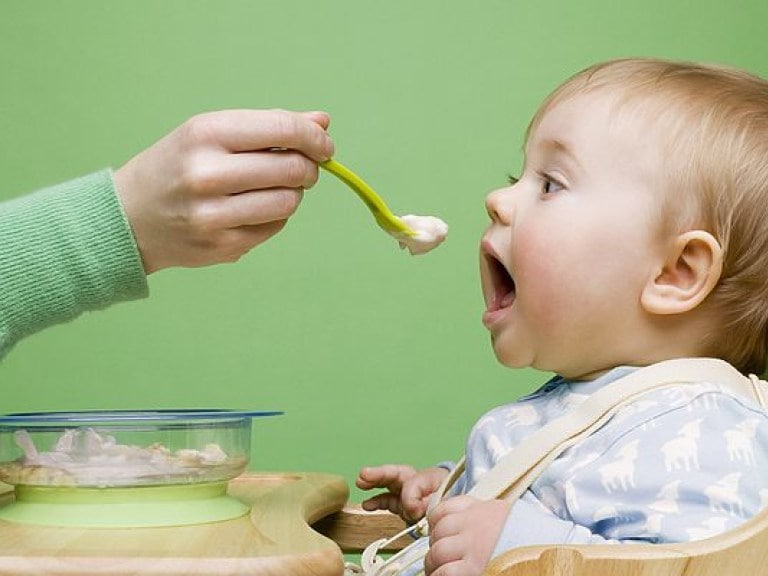 But neither their patience, nor pedagogical skills and perseverance can force children to perform certain actions. For example, they do not want to chew solid food. What to do in such a situation? How to teach him to chew and swallow?
But neither their patience, nor pedagogical skills and perseverance can force children to perform certain actions. For example, they do not want to chew solid food. What to do in such a situation? How to teach him to chew and swallow?
Parents should take care that the child's chewing skills and habits are formed at the right time and correctly. To do this, they should be aware of the possible causes of the lack of ability to chew and the methods of formation of this reflex. The answer to the question of when and how to accustom a child to solid food can be found in the article.
Benefits of solid foods
Pediatricians believe that the later a child starts chewing lumps, the more problems they may have.
Late transition to solid foods causes the following problems:
- Malocclusion.
- Disorders of the digestive system.
- Violation of the speech function, as the masticatory muscles are also involved in the pronunciation of words.

- Psychological disorders. At 2-3 years old, when the baby is already aware of his actions, he can generally refuse to take solid (not frayed) food.
Age periods for the formation of the chewing reflex
When to introduce solid food to the child's diet? You need to teach your baby to chew in stages, since a sharp transition from mushy food to hard and solid food can cause food refusal and stress.
Doctors believe that children older than 10 months should no longer choke on food. If this happens, then this symptom signals parents about health problems.
Conditionally, the stages of reflex development are divided into 3 categories:
- 6 months - 1 year is the ideal time to introduce complementary foods. You should start the process with very liquid cereals and mashed potatoes. The baby during this period tries to taste the food, he performs a variety of movements with his jaws and lips. From 8 months, small pieces of food can be left in the puree, the size of which needs to be increased over time.
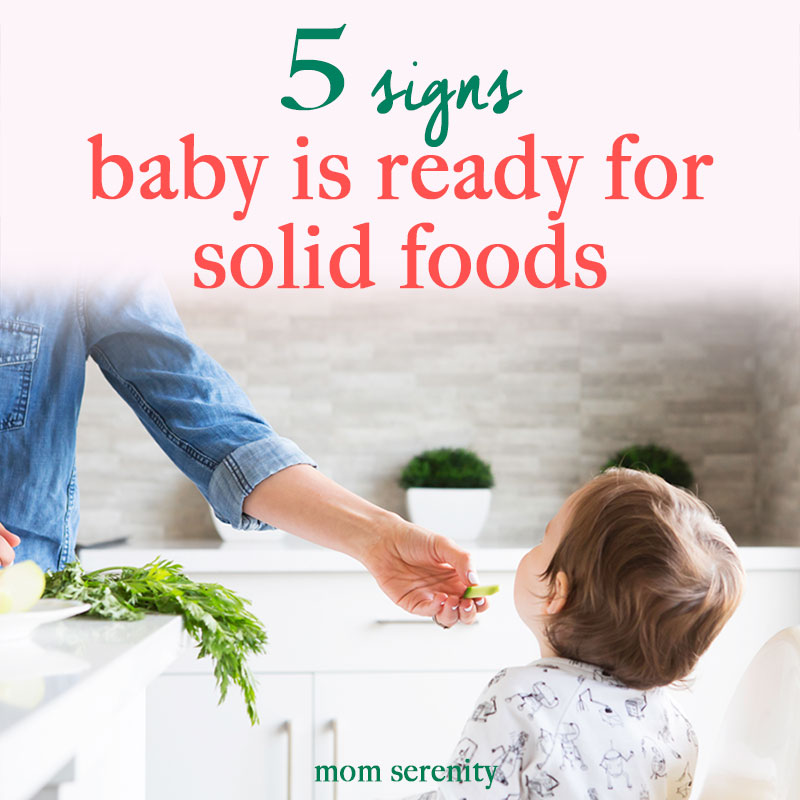
- 1 - 2 years - at this age, the child has an average of 8 teeth. His curiosity about solid food should be encouraged in every possible way. Some parents continue to give mashed potatoes, but overprotection in this case only harms the baby, if you do not start introducing him to hard pieces, then in the future it will be very difficult to do so.
- From the age of 2, a child should be able to chew solid food (vegetables, fresh fruit, meat) well. It is during this period that the bite begins to form and the masticatory muscles develop. The baby's body remembers how much saliva and gastric juice needs to be produced. If by this time the child has not learned to chew, you should visit a doctor.
Possible problems
How to teach a child to solid food, what problems can arise in the process of accustoming? A child who is accustomed to eating only liquid food does not immediately perceive solid food. He starts spitting out food, turns away, acts up. When you try to feed him with food of a more solid consistency, the following problems arise:
- The child refuses food, he is too lazy to chew.

- Too abrupt transition may frighten him, he will not understand what to do with the pieces.
- While eating, the child chokes - it is simply unusual for him to swallow solid food, over time he will learn to control his tongue. Parents should give new products after the main feeding, a well-fed child will not rush to satisfy his hunger, but calmly try the new product, getting to know the new taste and texture.
- Vomiting occurs when trying to swallow. This is due to improper feeding technique - a spoon is inserted too deeply into the mouth. In addition, the volume of a baby spoon should not be more than 3 ml. If the attacks of vomiting are very frequent, you should contact a neurologist.
- The child is afraid to chew and swallow. Every child's fear has a reason. Probably, he had choked heavily before, or bitter medicine was given from this spoon. You should contact a child psychologist and pediatrician. In addition, it is not necessary to give medicine from the same spoon and then feed it with food, children remember little things well, perhaps he refuses not to eat, but to eat from this spoon.
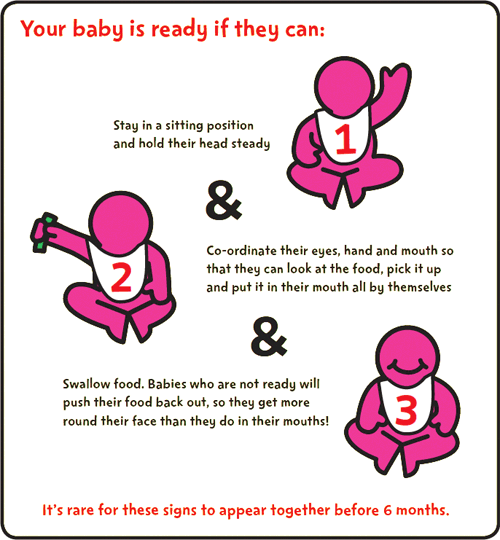
To overcome the gag reflex, a specific massage should be done. Use a napkin that touches the tongue, and the child should strive to push it out with the help of the tongue. So he gets used to new sensations and will not experience the urge to vomit when feeding.
When does a child start eating solid foods and when should one start to worry?
The chewing reflex is formed from about 7 months, when the teeth begin to erupt. It is at this time that the child makes the first attempts to bite everything and pulls surrounding objects into the mouth. This period of development of the baby is the time when the child is given solid food. That is, this is a signal to parents when to start introducing solid lumps into the diet. It is best to start with liquid cereals and mashed potatoes.
- By the age of one, the child is able to chew small pieces independently;
- At 2 years old, the child calmly chews and swallows any food.
If the chewing reflex has not developed by the age of 2, the pediatrician should be consulted.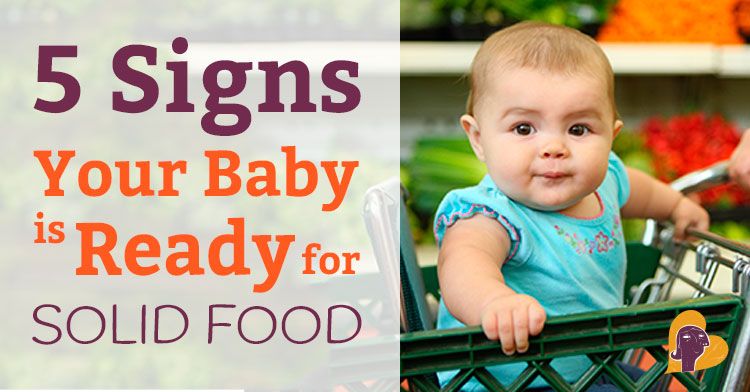
Causes of the problem
How to accustom a child to solid food, what problems hinder this process? There are several reasons that hinder the improvement of the chewing reflex, most of them can be eliminated at home.
Main causes of chewing difficulties:
- Impatient parents. Getting used to solid food is a long process, some moms and dads get tired of taking care of the child, they give him the food that he is used to so as not to waste time.
- Fear of parents that the child might choke. Many mothers begin to accustom to adult food late, fearing that the child will choke. In the future, this leads to even greater problems in the formation of this skill.
- Inconvenient spoon for the baby. It is best to buy a small children's spoon made of silicone with a bright pattern. It is very comfortable, does not injure the enamel of the first teeth.
- Hyperactivity of the child - it is difficult for such children to concentrate on the process of chewing and swallowing.
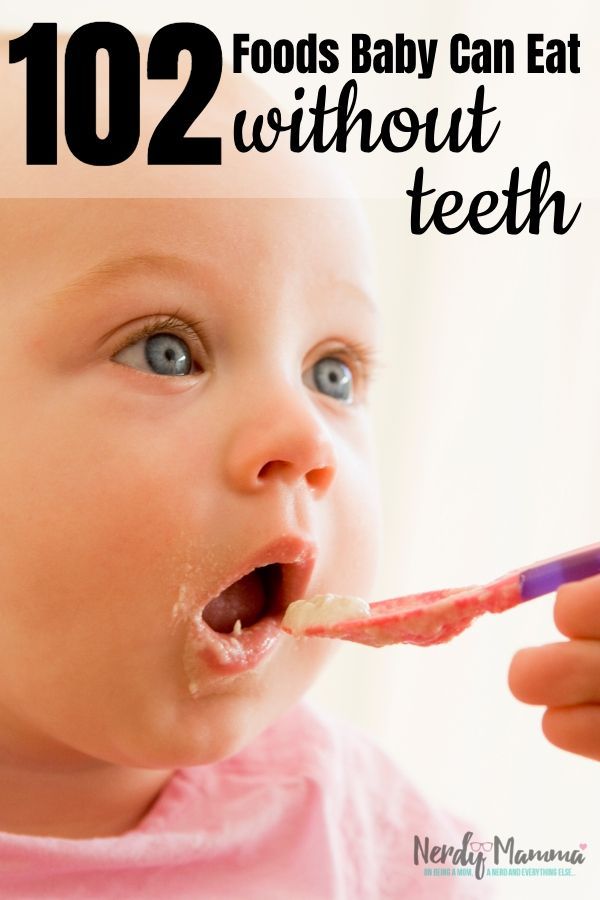 They begin to act up and demand food that is familiar to them, for which they do not need to spend additional effort.
They begin to act up and demand food that is familiar to them, for which they do not need to spend additional effort. - Absence of teethers in a child. With them, he learns to chew and he forms the correct bite.
- Failure by parents to meet the deadlines for accustoming the child to solid food. It should be taught gradually. If abruptly transferred to solid food, this can provoke frequent whims.
When can I start introducing solid foods?
From the moment the introduction of complementary foods is started, the child should be taught to eat smooth and grated puree. The baby still has an immature digestive system and no teeth. In addition, up to 6 months they have developed an expulsion reflex, which protects them from accidentally swallowing objects.
When and how to teach a child to chew solid food? It is not worth introducing complementary foods before 6 months, it will push food out, the process of feeding can lead to vomiting. But over time, he begins to taste hard pieces.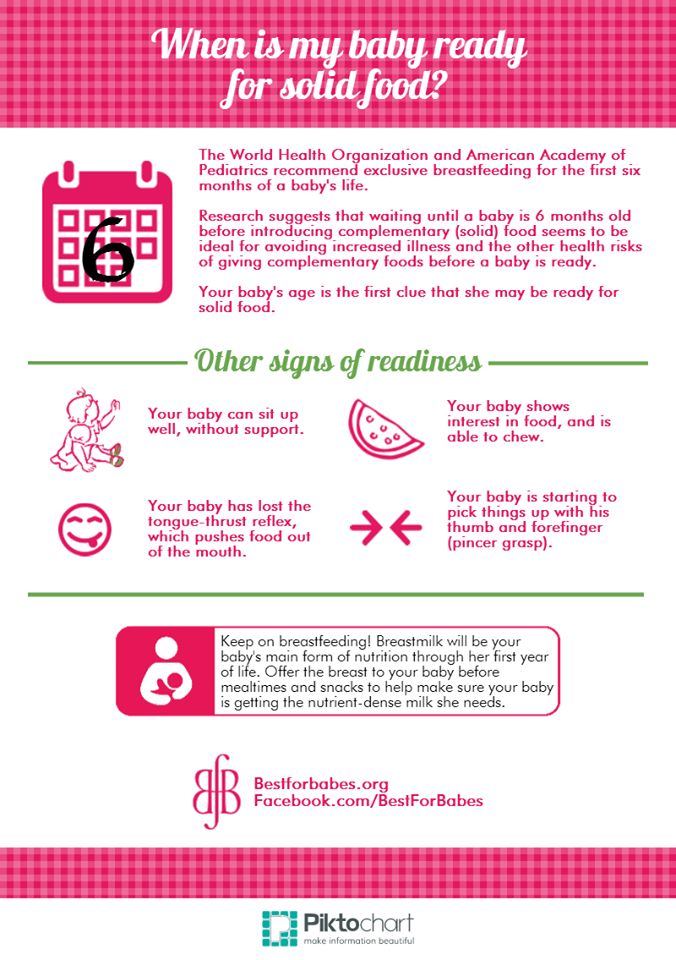 This occurs when he begins to cut his teeth and there is a desire to scratch the gums. Parents should be very careful. Giving your baby bread and cookies is extremely dangerous - he can choke. How to teach a child to eat solid food?
This occurs when he begins to cut his teeth and there is a desire to scratch the gums. Parents should be very careful. Giving your baby bread and cookies is extremely dangerous - he can choke. How to teach a child to eat solid food?
How to understand that he is ready to be chewed? Baby is ready for solid food if:
- The kid looks with interest at the adult's plates, tries to take pieces from them.
- If he puts a spoon in his mouth and it does not cause him to gag.
- If while feeding puree, he does not suck it, but removes it from the spoon with his lips.
These are the main signals that tell parents that the baby is ready for hard pieces. Usually training starts at 8-10 months. Before this period, it is extremely dangerous to give a child solid food. During feeding, you should be nearby and not leave the baby for a second.
How to teach a child to eat solid food?
Doctors recommend starting the process of developing the chewing habit of a baby at an early age. Ways to help facilitate the learning process:
Ways to help facilitate the learning process:
- Using a nibbler is a special strainer in which you put a fruit or vegetable. Through it, he will be able to safely suck food, taste, chew without the threat of choking on a piece.
- Calmness and patience of parents. You can’t be nervous, scold the baby, yell at him if he doesn’t succeed. Care should be taken that he is comfortable and the food leaves only positive impressions.
- Buy a baby teether - it helps to scratch the gums and forms a chewing reflex.
- How do I switch my baby to solid food? The gradual teaching of the baby to chew solid food. You need to start with mashed potatoes, then knead the food with a fork, gradually accustom him to eating a more solid consistency. Less homogeneous food, with small pieces, contributes to the process of learning to chew.
- From the age of 1, small pieces of vegetables and fruits should be given to the child in the hand.
- Involve your baby in the cooking process.
 You can offer him to knead his own food with a fork, he will soon get tired of this process and he will begin to take pieces and chew them.
You can offer him to knead his own food with a fork, he will soon get tired of this process and he will begin to take pieces and chew them. - From the age of 1, the baby should be seated at an adult table so that he can watch how his parents and other family members eat and learn to be independent.
If there is no appetite
How to teach a child to chew solid food if he refuses to eat? It happens that the baby refuses solid food due to lack of appetite. Then the main task of mom and dad is not only teaching the baby to chew, but also stimulating interest in the process of eating food.
Ways to stimulate appetite:
- Organize your child's leisure time so that he moves more.
- Give him rosehip decoction instead of juices. Remove snacks from your diet.
- Serve food on bright dishes, decorate the dish with bright fruits and vegetables. Do not indulge the whims of the child, but do not scream, do not scold if something does not work out for him.

If a child at 2 years old does not want to eat solid food
How to teach a child to swallow solid food if at 2 years old he does not know how to do this and does not want to eat "adult" food? If the baby is not able to chew and swallow by the age of two, you should contact your pediatrician. If, after consultation, the child is recognized as absolutely healthy, the problem should be sought elsewhere.
The most common of them:
- Late transition to adult food.
- Overprotection of parents.
- Employment of parents.
- Child hyperactivity.
In such a situation, parents need to stock up on calmness, patience and teach the baby to chew and swallow, explaining how to do it.
The child does not want to chew
There are times when the baby does not agree to eat anything but puree. It is especially bad when a child aged 1.5 - 2 does this, he has already formed habits, and he does not want to change them.
- If he eats fruit with pleasure, but doesn't want soup, the reason may be the number of teeth the baby has. If he has less than 8 teeth, he simply has nothing to chew on.
- Sometimes the rejection of solid food is pedagogical. It simply tests the boundaries of acceptable behavior. You should be patient, do not panic and give him the same food some time later.
- You should offer him to choose what he wants to eat. Soup or porridge, the right to choose forms an interest in food in the baby.
Useful tips for parents
And finally, we will give some recommendations to parents who are starting to accustom the baby to “adult” food:
- Gradually add pieces of solid food to the food ground in a blender.
- Keep your child interested in food.
- Involve the baby in the cooking process.
- You can offer him to eat something sweet and tasty, for example, marmalade.
- When you sit him down at an adult table, he will see what kind of food everyone around eats and start imitating the rest of the family.
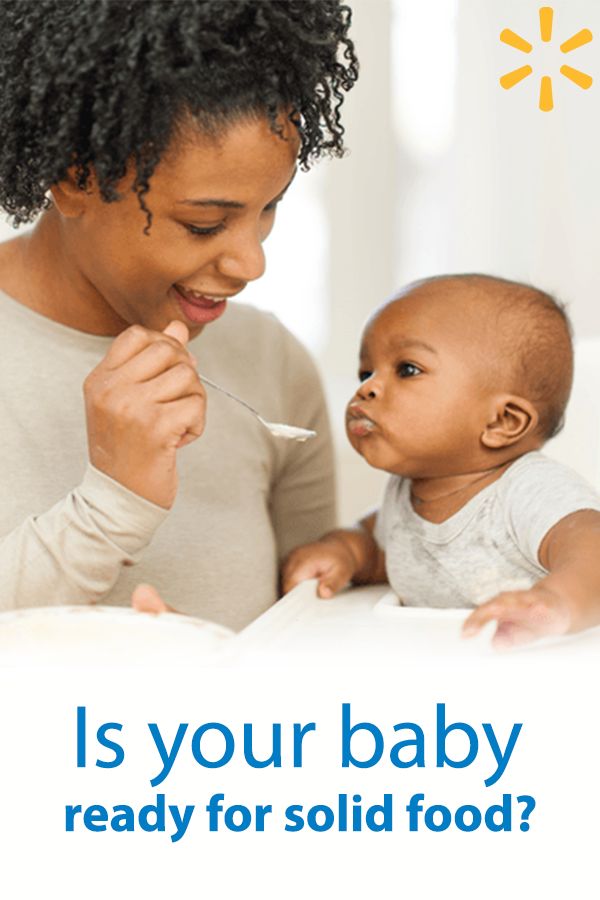

 Read more here: Is my exclusively breastfed baby gaining too much weight?
Read more here: Is my exclusively breastfed baby gaining too much weight?
